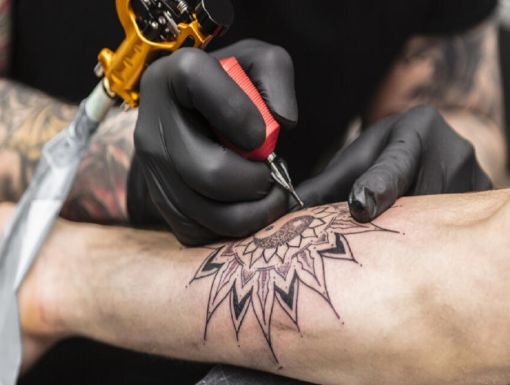
Infected Ear Piercings: 6 Ways It Can Happen
Getting your ears pierced can be a fun way to add some personality to your ear. Generally, ear piercings are a simple and safe procedure. However, a piercing is an open wound, and with any opening of the skin, you need to ensure you are properly taking care of it so it does not get infected.
How does an ear piercing get infected?
Depending on the piercing site, it can take anywhere from four months to over a year to heal. During that healing time, bacteria or irritants can get in the opening and cause an infection. This can happen due to a variety of reasons:
- If you get your ears pierced in a place that may lack cleanliness, bacteria can transfer from the tools they use to your ear. It is very important to research where you are getting the piercing to ensure they use high-quality medical-grade instruments.
- Touching your piercing with dirty hands. Always wash your hands before handling the piercing.
- Not following the proper piercing cleaning instructions provided by the piercer.
- Submerging the piercing in water that may be dirty or harbors bacteria, like a hot tub or lake, before the piercing is completely healed.
- Lying on the piercing for extended periods while it is healing. This can trap moisture and bacteria.
- If you’re allergic to the jewelry material. This can cause contact dermatitis, which can cause redness and itchiness. Many people are allergic to nickel, which is a common material found in jewelry.
How common are infections after an ear piercing?
Most people do not have serious issues after an ear piercing. Mild irritations and infections are common as the hole begins to heal, but these infections often clear up quickly. With good care, most infections clear up within a few days.
Are certain ear piercings more prone to infection?
Cartilage piercings generally take longer to heal and are more prone to infection because this part of the ear is stiff and has a lower blood supply. Infections in the upper ear can often be more serious because cartilage piercings are harder to treat. Because the cartilage has a lower blood supply, it is harder for medications like antibiotics to transfer to the site. Earlobes, on the other hand, have a blood supply that can better deliver these bacteria-killing drugs.
What does an infected ear piercing look like?
If you believe your ear piercing is infected, you may experience:
- Redness
- Swelling
- Tenderness at the site
- Yellow or green discharge from the piercing site
- Itching or burning
How do I treat an infected ear piercing?
For minor infections, you can try treating at home following these steps:
- Don’t remove the jewelry – While it may be tempting to take the earring out, it is best to leave the jewelry in. If you take the jewelry out, you increase your chances of having bacteria enter the site. Additionally, bacteria and pus can get locked in if the hole closes, trapping the infection inside. Wait until you see a doctor or professional piercer to determine if the jewelry should be removed.
- Wash your hands before touching the piercing – It is important that you are not introducing any other bacteria to the site. Wash your hands with warm water and soap before touching any part of your ear.
- Use a salt solution to clean the infection – Mix 1 cup of distilled water with ½ teaspoon of salt and stir until the salt is dissolved. Soak a cotton pad in the solution and gently clean both sides of the infected area. Pat the area dry with a clean towel. Avoid using rubbing alcohol, hydrogen peroxide or antibiotic creams unless instructed by your medical provider. These products can further irritate the infected area and may slow down the healing process.
Follow these steps two times a day until the infection is completely healed. This can sometimes take six to eight weeks.
When should I see a medical professional for an ear-piercing infection?
If symptoms do not go away after home treatment or if you develop an abscess (painful bump within the piercing), spreading infection, fever, chills or swollen lymph nodes, notify your physician for evaluation and treatment. Antibiotics may be needed to treat more advanced infections. Serious infections can lead to tissue damage. Additionally, if the earring clasp gets stuck in your ear or you cannot move the earring, do not try to remove the earring on your own. This can cause further damage to your ear.
If an infection pops up after a piercing, be sure to treat it in a timely manner, so there are less complications.
Learn more about Megan Hartman, MD



